The Eastfield Park Planted Meadow (2015 to 2020)
- vicsmithfoep
- Nov 28, 2020
- 7 min read
Updated: Nov 29, 2020
What is now referred to as the Eastfield Park ‘Planted Meadow’ began in April 2015 as a narrow ‘Wildflower Border’ along the north-facing fence between the Park and Eleonore House. In 2017 this border was extended out into a semi-circular ‘Seeded Meadow’ with the metal fence forming the diameter of the circle. Plans to convert the seeded meadow into a more formal ‘Wildflower Garden’ in 2018 were later abandoned. Instead, the seeded meadow was extended to cover a larger area and, since the intention was to sometimes transplant wildflowers directly into it as plugs or more mature plants, it became known as the ‘Planted Meadow’ rather than the ‘Seeded Meadow’.
The Wildflower Border (2015-2016)
A team of 14 volunteers from Thomson Holidays, overseen by Friends of Eastfield Park, created the original wildflower border in April 2015. (The same volunteers also extended the small herbaceous border that had been created by Northampton College students the previous year along the west-facing fence.)

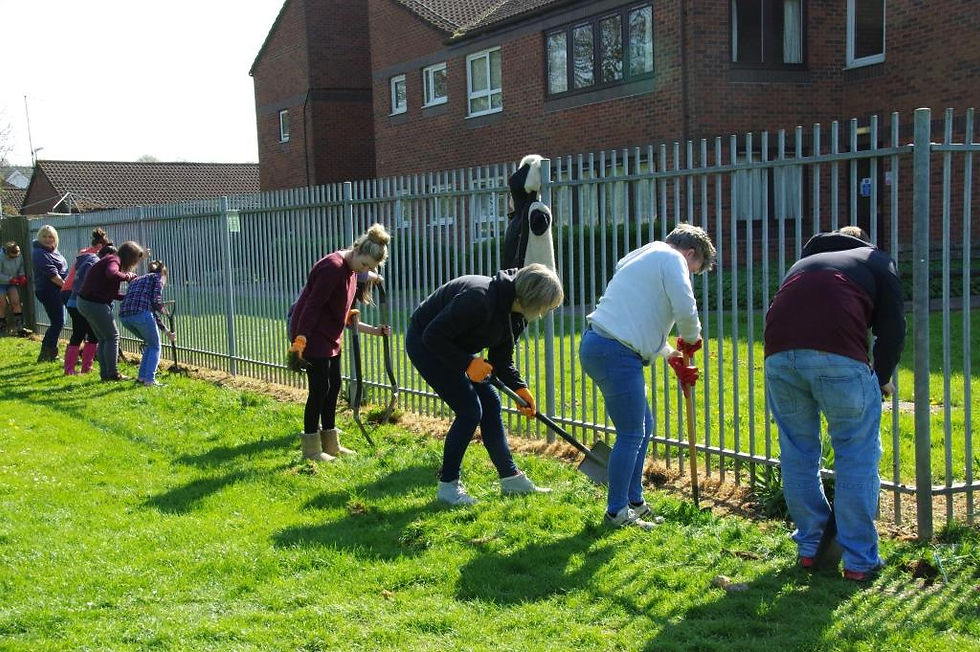
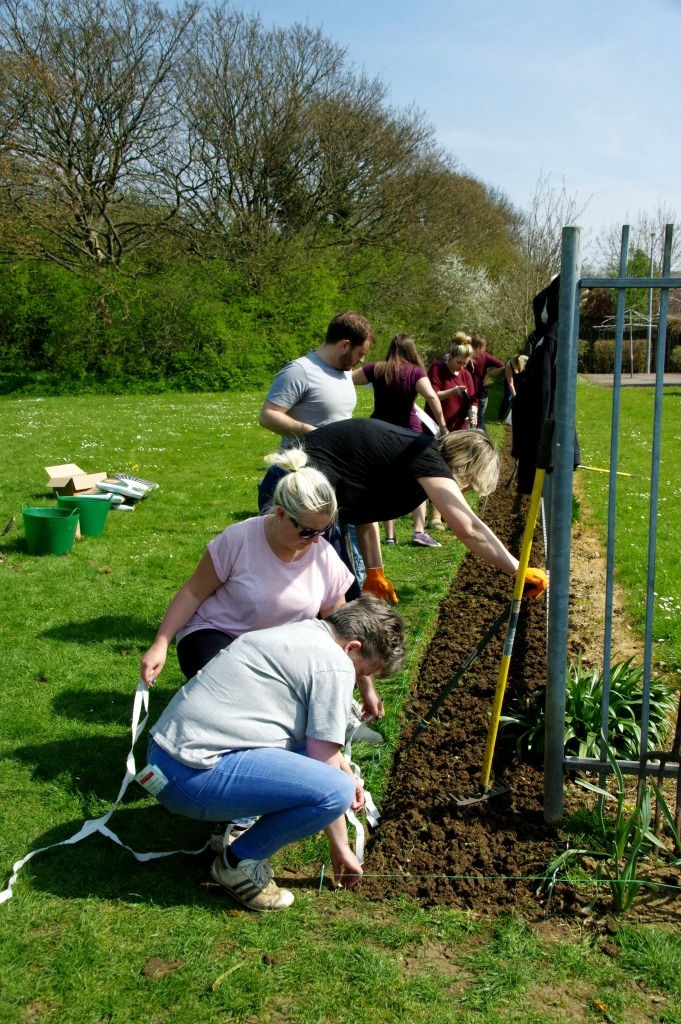
The wildflower border was formed using two kinds of biodegradable seed carpet, one with mixed annual and perennial wildflowers, the other with mixed perennial wildflowers selected to attract bees. Funding for the seed carpets was provided by the St Alban’s Church Friday morning drop-in and residents from Eleonore House. The border produced a colourful display later the same year and helped to increase biodiversity within the Park.


The Seeded Meadow (2016-2018)
The 2015 wildflower border was so successful that late in 2016 permission was obtained from NBC to extend the border into a ‘wildflower meadow’. Initially, the extension was called the ‘artificial meadow’ to distinguish it from the more natural set-aside areas established elsewhere in the Park. However, this term proved misleading and it was later changed to ‘seeded meadow’. The seeded meadow was semi-circular in shape and approximately 130 sq. metres in area.
One of the main considerations when establishing a wildflower meadow is how to suppress the growth of competing grasses, especially species such as perennial rye grass. This usually involves reducing soil fertility and one way of doing this is to remove the top layer of soil completely. This approach was considered for Eastfield Park, but was deemed too labour intensive and could have resulted in a large muddy area while the meadow was being formed. Furthermore, it was probably not necessary since it was unlikely that the area had ever been heavily fertilized. Instead, the selected area was poisoned using a glyphosate-based herbicide and the dead grass removed from the surface (to remove organic matter that would increase soil fertility). The area could then be sown with a mix of seeds containing a high proportion of yellow rattle (Rhinanthus minor), an attractive grassland annual which is semi-parasitic on grass. It weakens the grass and thus helps to produce a better growth of wildflowers.
Most of the plants in the meadow area were poisoned late in 2016 and, as far as possible, any surviving vegetation scraped off early in 2017. The area was then sown with 1kg of meadow seeds on 26th and 28th April, later than intended because of the dry weather and hardness of the ground in March and April. Even so, conditions were far from ideal when the seed was scattered across the prepared area, and this undoubtedly impacted on the success of the project. The meadow seeds (Meadow Mix N4: Summer flowering butterfly & bee meadow mixture) were obtained from Naturescape British Wildflowers. Yellow rattle was not sown at the time since it requires a frost to germinate and thus needs to be sown in autumn.


The meadow did not develop as anticipated, mainly because of poor germination and weak growth of plants early in the season following unseasonably dry weather when the clay soil was baked hard. The meadow was examined by Matt Johnson and Chris French from the local Wildlife Trust on 31st July, and four types of plant seemed to be growing in the area: first, plants self-seeded from the wildflower border created along the fence in 2015; second, plants that have good powers of dispersal and rapidly colonise bare ground; third, plants that occur naturally in the Park’s grassland and either survived the poisoning or else rapidly colonised the exposed area; and finally, plants that grew from the meadow seeds scattered on the area in April. The dense growth of chicory undoubtedly belongs to the first category and greater willowherb to the second, but several of the recorded species (such as common knapweed and yarrow) occur naturally in the Park but were also present in the meadow mix, so could belong to either the third or the fourth group. Many of the species supplied in the mix (such as meadow cranesbill, Geranium pratense) were not recorded in the meadow in 2017 but may well appear in the future (dove-leaved Cranesbill, Geranium molle, was recorded but is probably one of the plants that spread from the wildflower border).

Despite a degree of disappointment in 2017, the created meadow, provided a good habitat for a range of animals especially insect pollinators. When the chicory was cut down in August to allow a better mix of plants to develop, one newt, three toads and innumerable frogs were disturbed. The meadow was mowed by contractors with large machines in autumn 2017 and again in autumn 2018 but, because of the amount of wildlife sheltering in the long vegetation, it was decided that in future it would be better for FoEP volunteers to cut the area with hand-held machines.

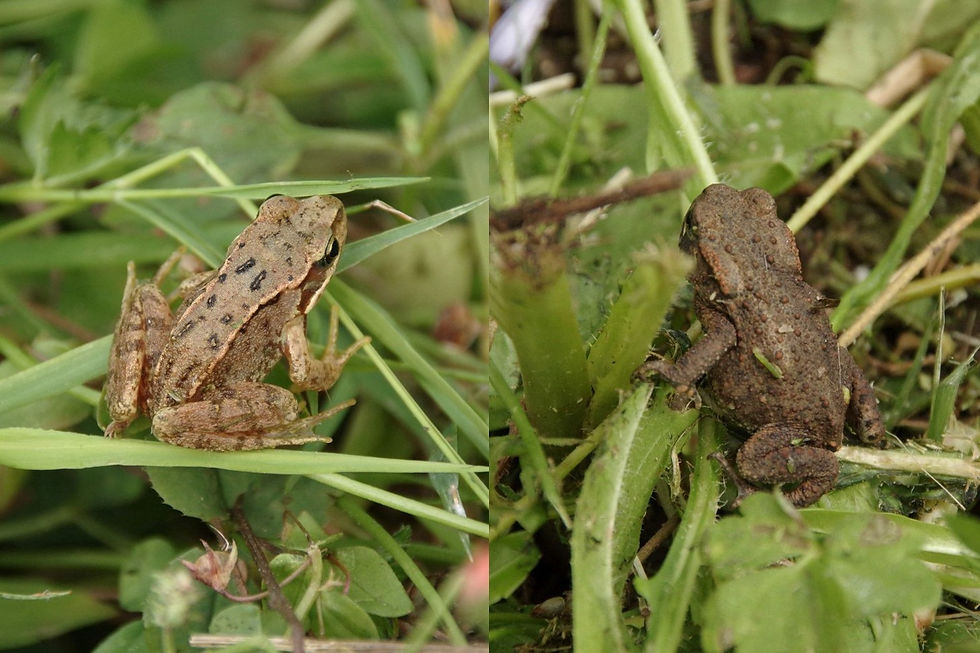
The Planted Meadow (2019-2020)
In 2018, a proposal was made to convert the seeded meadow into a more formal planted meadow with selected wildflower species planted in a precise pattern within the semi-circular seeded area. It was later realised, however, that this would require more voluntary labour than the Friends could call upon at the time. Besides, by mid-2019 the seeded meadow was thriving and attracting a wide range of insects and other wildlife. Matt Johnson (the local Wildlife Trust’s Living Landscapes Manager), Nicola Clarke (Community Engagement Officer for idverde) and Paul Townsend (Assessor for Northampton in Bloom and It’s Your Neighbourhood) all visited the Park in 2019 and commented on how well the seeded meadow was doing. It therefore seemed more appropriate to extend the meadow rather than transform it. Matt Johnson’s only reservation was that it might be difficult to get some meadow species to grow under the shade of the trees.
In September 2019, the EPMC (Eastfield Park Management Committee) agreed that the meadow should be extended into the area illustrated in the following diagram and idverde contractors were requested not to mow this part of the park. The plan was not to develop the whole area immediately but to seed or plant different parts of it with wildflowers over several years. The approximate area of the new planted meadow, including the extension, the original seeded meadow and the adjacent set-aside, is 1,000 square metres. The plans included sowing parts of the area with yellow rattle (Rhinanthus minor) as soon as possible.
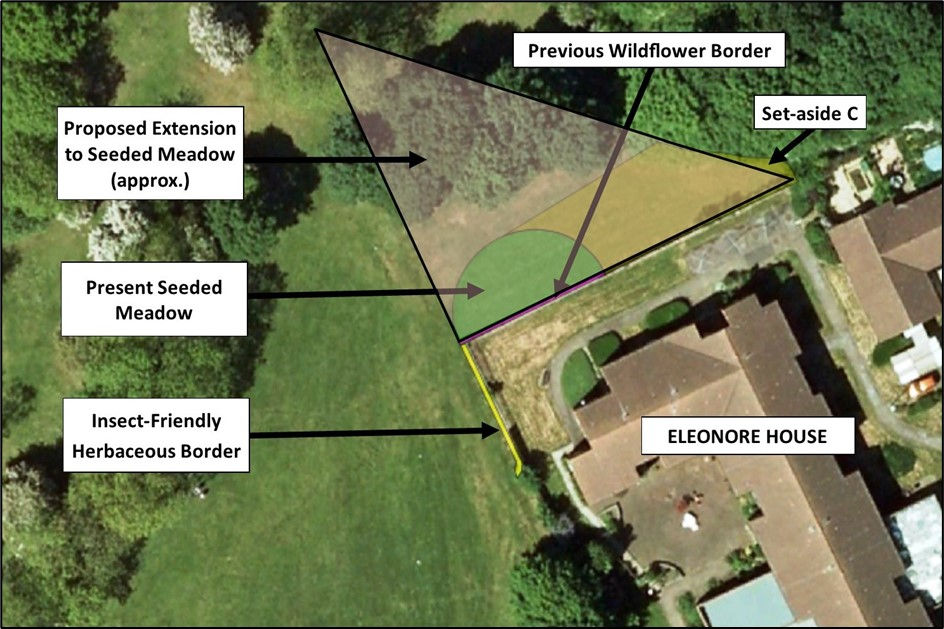

During the autumn of 2019, two patches of the extension were treated with herbicide and then, after the dead grass had been removed, these were seeded with meadow plants including Betony (Stachys officinalis), Common Vetch (Vicia sativa), Field Scabious (Knautia arvensis), Meadow Buttercup (Ranunculus acris), Meadow Cranesbill (Geranium pratense), and Tufted Vetch (Vicia cracca). To encourage park users to keep to a particular route through the meadow, a pathway was mowed through the vegetation from near the corner of the Eleonore House fence to the area known as ‘Buttermere Scrub’ (scrubland at the back of Buttermere Close and Howard Biley Gardens). Patches on either side of this path were mowed short and seeded with yellow rattle. (The seeds were planted directly onto bare soil close to grass roots rather than being simply scattered over the patch.) The areas around the base of some of the trees were planted with crocus bulbs mainly to indicate to Park users that the area was being cared for. Purchase of plants was facilitated by a grant from Cllr Paul Joyce’s community empowerment fund.
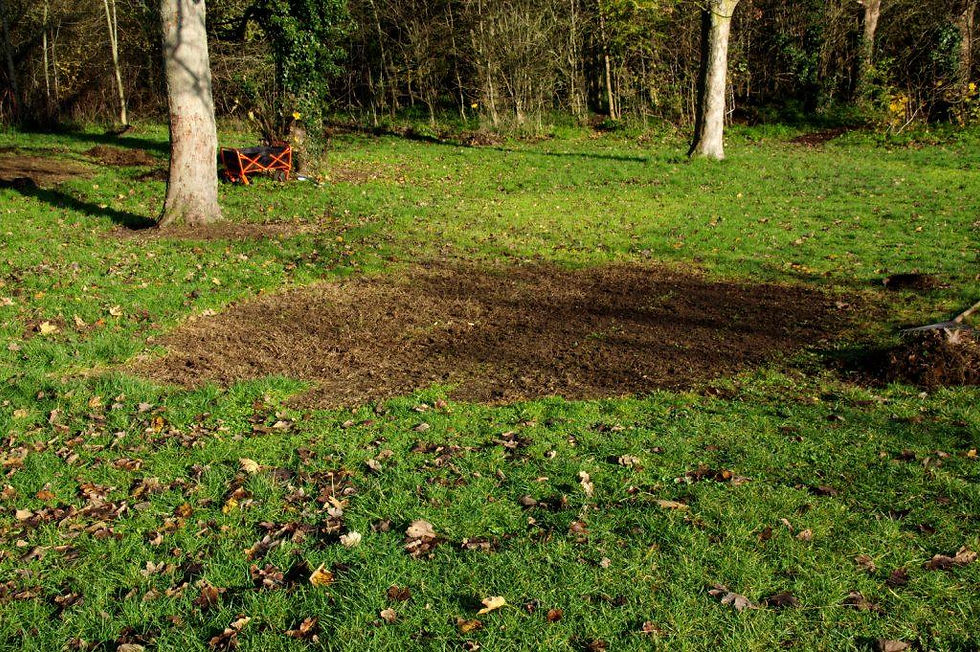
Little work was carried out on the planted meadow during the first half of 2020 because of restrictions associated with the Covid-19 pandemic but the extension was marked out on the ground in March just before the national lock-down began. No detailed survey of the area was made during the year but photographs were taken of the more conspicuous wildflowers. Yellow rattle grew successfully and flowered in the areas where it had been planted. There was little evidence of the other plants seeded into the meadow extension, but a patch of buttercups and several patches of wild geraniums did appear later. Whether these developed from the seeds sown the previous autumn is uncertain. Other plants, such as honesty (Lunaria annua), colonised the areas previously cleared for sowing.



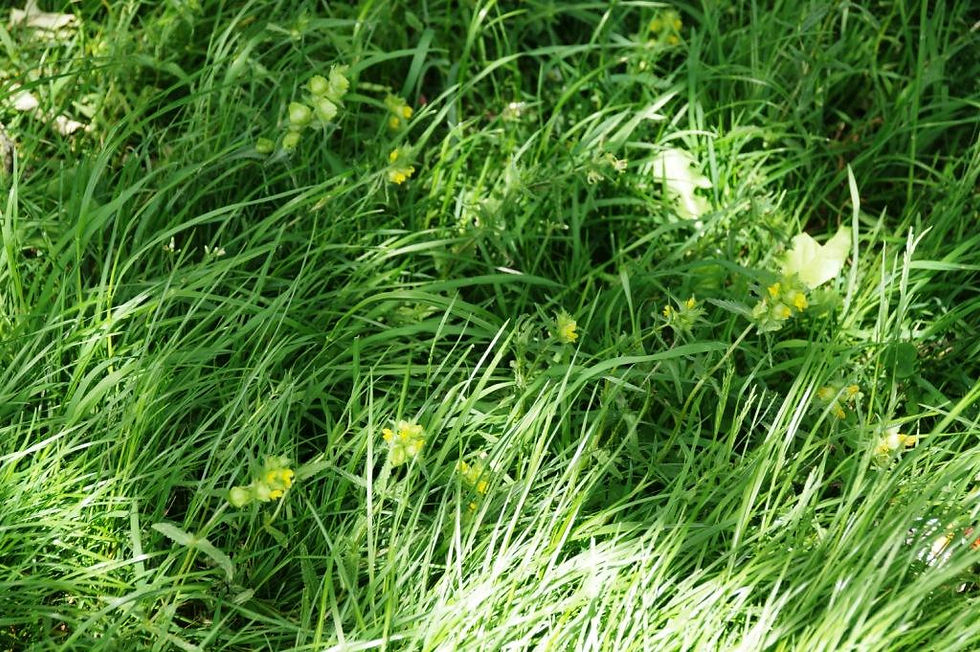
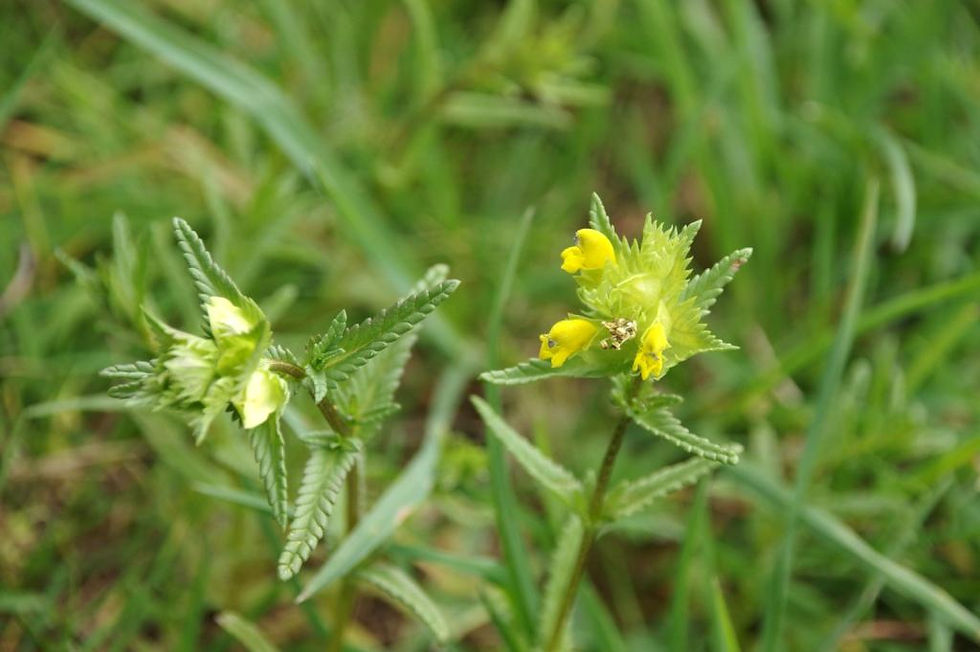
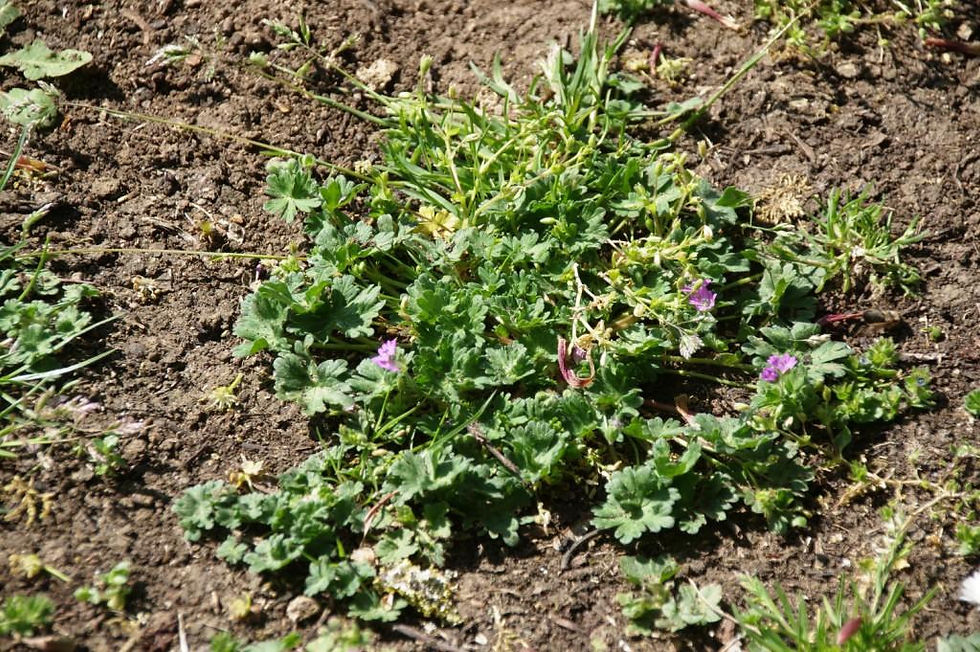
Most of the meadow extension was mowed by idverde in July 2020 and the cuttings subsequently raked up by FoEP volunteers.

Early in November 2020, FoEP volunteers cut down most of the taller vegetation in the original seeded meadow. The cuttings were raked up and added to the compost heap or the 'wildlife hotel' in the nearby scrubland. This work was carried out using an Ego cordless electric hedge trimmer mounted on an extension pole. This is much safer than using either a brushcutter or a strimmer.

One patch was deliberately left uncut and, later in the month, an area around this patch was cut short and planted with yellow rattle seeds. A few cranesbill (Geranium) plants were also transplanted into this area. Later still, two more areas, one in the old 'seeded meadow' and one in the 'set-aside' next to the seeded meadow, were cut close to the ground exposing soil between the meadow plants. After raking, these areas were sown with yellow rattle. Four smaller areas in the meadow extension were also cut low and seeded. Finally, a few more wild geraniums were transplanted from an area where they are abundant into the meadow extension.

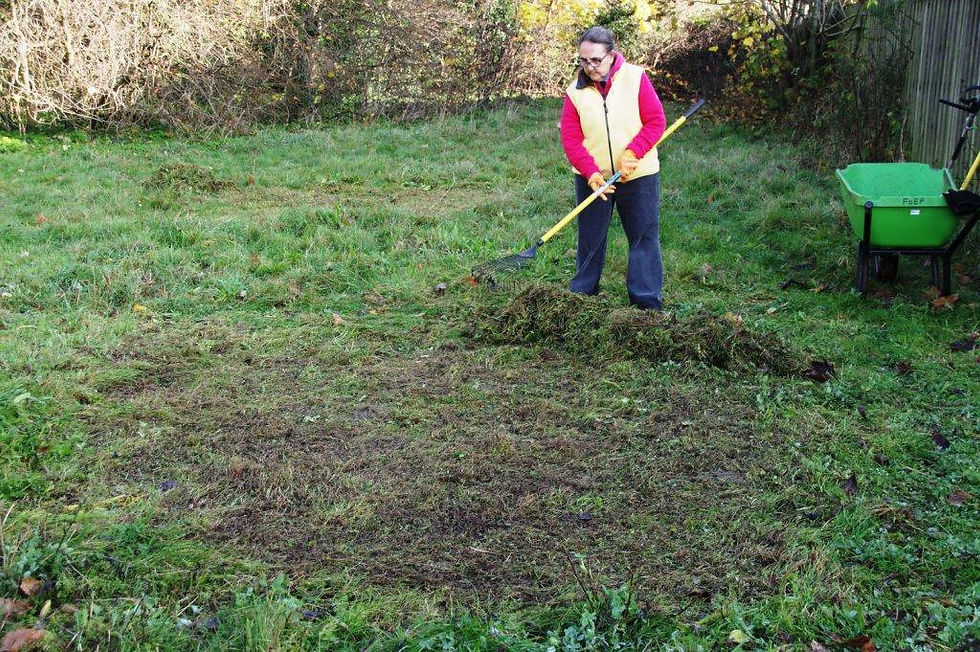
The aim is not to produce a spectacular array of brightly coloured flowers but to create a habitat with a rich and varied mix of wildflowers and grasses that will increase the overall diversity of wildlife, both plants and animals, in the area. It will take several years to fully achieve this, but we hope to make progress each year.
APPENDIX I
Species found in the Seeded Meadow in 2017 and 2019
(* indicates grass species)
Species Year
Autumn hawkbit (Leontodon autumnalis) 17/19
Black medick (Medicago lupulina) 17/19
Chicory (Cichorium intybus) 17/19
Cock's-foot (Dactylis glomerata)* 17/19
Common bent (Agrostis capillaris)* --/19
Common bird's-foot-trefoil (Lotus corniculatus) 17/19
Common knapweed (Centaurea nigra) 17/19
Common mouse-ear (Cerastium fontanum) 17/--
Cornflower (Centaurea cyanus) 17/--
Creeping buttercup (Ranunculus repens) 17/--
Creeping cinquefoil (Potentilla reptans) 17/19
Crested dog's-tail (Cynosurus cristatus)* --/19
Cut-leaved cranesbill (Geranium dissectum) --/19
Daisy (Bellis perennis) 17/--
Dandelion (Taraxacum sp.) 17/--
Dock (Rumex sp.) --/19
Dove-leaved cranesbill (Geranium molle) 17/19
False oatgrass (Arrhenatherum elatius) --/19
Field bindweed (Convolvulus arvensis) --/19
Field poppy (Papaver rhoeas) 17/19
Greater knapweed (Centaurea scabiosa) 17/--
Greater plantain (Plantago major) 17/--
Greater willowherb (Epilobium hirsutum) 17/--
Hedge bedstraw (Galium mollugo) --/19
Hedge bindweed (Calystegia sepium) --/19
Lady's bedstraw (Galium verum) --/19
Meadow barley (Hordeum secalinum)* 17/19
Oxeye daisy (Leucanthemum vulgare) 17/19
Perennial ryegrass (Lolium perenne)* --/19
Red clover (Trifolium pratense) 17/19
Ribwort plantain (Plantago lanceolate) 17/19
Scarlet pimpernel (Anagallis arvensis) 17/--
Scented mayweed (Matricaria chamomilla) 17/--
Selfheal (Prunella vulgaris) 17/19
Soft brome (Bromus hordeaceus) --/19
Spear thistle (Cirsium vulgare) 17/--
Sweet vernal-grass (Anthoxanthum odoratum)* --/19
Timothy grass (Phleum pratense)* 17/19
Upright hedge Parsley (Torilis japonica) 17/--
White clover (Trifolium repens) 17/19
Wild carrot (Daucus carota) --/19
Yarrow (Achillea millefolium) 17/19
Yorkshire-fog (Holcus lunatus)* 17/19
APPENDIX II
Some of the plants growing in the original seeded meadow in June 2020
(Hover over picture for caption)



























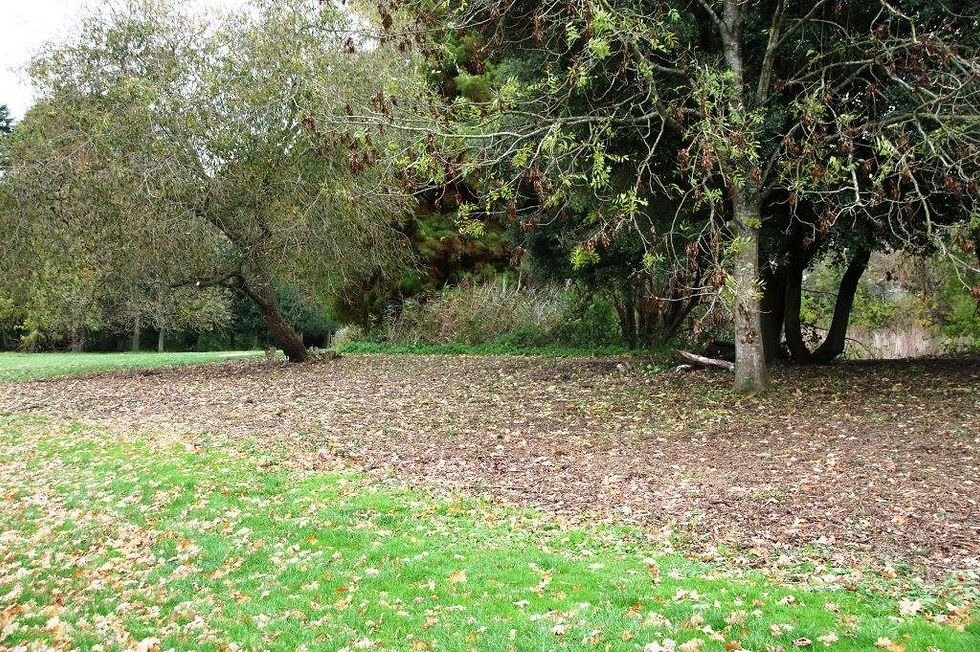
Comments